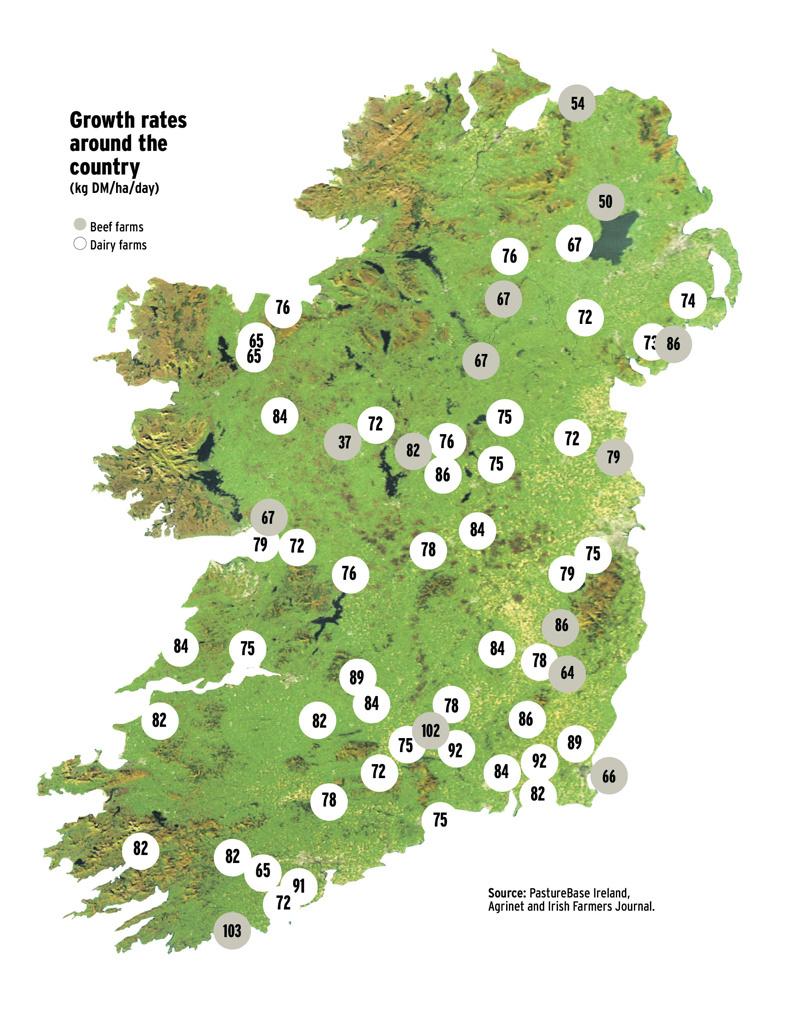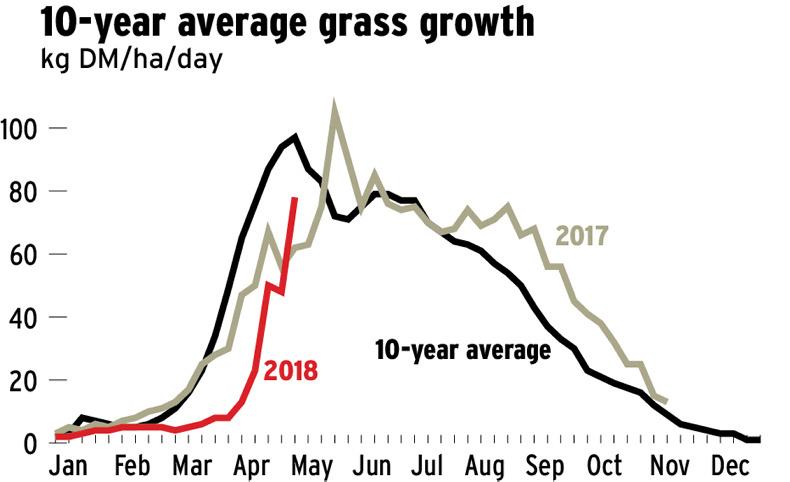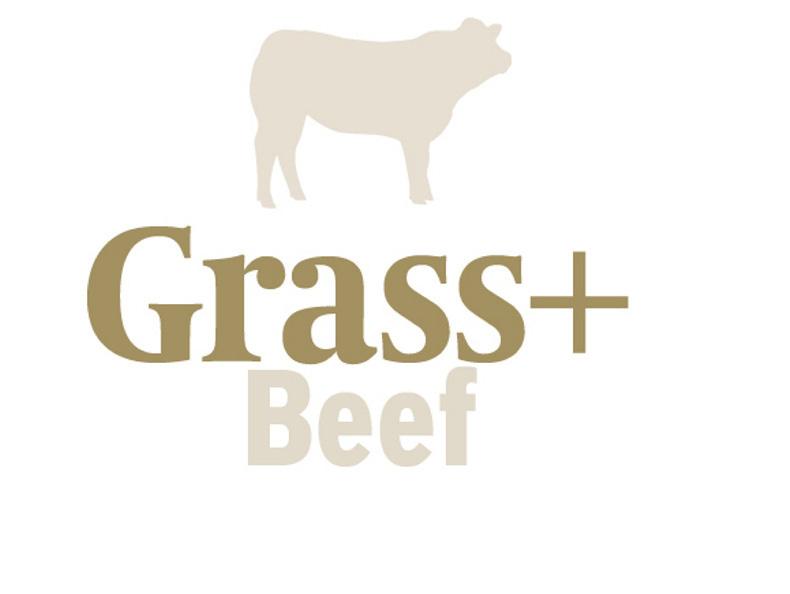For many, last weekend’s fine weather brought with it the change that was needed to catch up on lost time. On heavier farms it meant fertiliser could be spread on land and should help to finally drive on growth rates.
Most farmers are going with two bags of 18:6:12 on grazing land, especially areas low in phosphorus and potassium. Up to now, conditions were still too poor on many farms to get fertiliser out but thankfully last weekend’s weather window gave the opportunity to get bagged manure spread. It also gave farmers on wetter farms the opportunity to get stock out grazing after what felt like an eternity indoors. The challenge now is to get wetter areas grazed off to encourage fresh growth.
Some farmers reading this will think I’m describing another world unfortunately. These farmers, in coastal areas especially, were covered over by persistent cloud and fog with no real drying happening. This has been really frustrating for affected farmers.
Most are trying to limit the damage done to paddocks with on-and-off grazing and back-fencing grazed areas. On drier farms that got the sunshine, growth rates are rocketing ahead. On these dry farms, where average farm cover is high and pre-grazing covers are exceeding 1,500kg DM/ha, the best option would be to skip some paddocks and bale these surpluses when a weather window permits.
Fodder quantity
After coming out of winter 2018 we should all be mindful of the benefits of good quantities of fodder on hand for next winter. With showers forecast over the next number of days, this could be easier said than done.
However, farmers on drier farms should not be as fearful ear marking some strong paddocks for baling because despite the rain growth rates are rocketing ahead with some exceeding 80kg DM/ha.
This means we are less likely to run into a deficit in the near future and are far more likely to be facing into very strong covers and poor cleanouts. Farmers in GLAS should remember they have the option of grazing wild bird cover. This needs to be grazed and broken down before replanting.


Co Westmeath
System suckler to bull beef
Soil type Heavy
Farm cover (kg DM/ha) 955
Demand (kg DM/ha/day) 37
Growth (kg DM/ha/day) 26
Growth has picked up well the last couple of weeks but ground conditions remain difficult. Calving is thankfully nearly finished and this week I hope to group the cows before I let the bulls out with them. With the changeable weather, I have magnesium licks out with the cows as a precaution against grass tetany. This year, I am feeding a group of bulls for slaughter under 16 months. Currently they are on ad-lib meal and look to be doing very well; they will be ready for slaughter in a month.
Last weekend, I turned out the last of the stock. I am giving stock short allocations of grass and keeping them moving to try and minimise any poaching.
I had a group of heifers that I had planned to finish off grass during the summer but with the late spring and ground conditions still difficult I made the decision to leave them in and meal-feed them. Silage ground is fertilised since the middle of April and it should be on target for the end of May cutting.

Co Tipperary
System Suckler to steer finish
Soil type Variable
Farm cover (kg DM/ha) 1,696
Demand (kg DM/ha/day) 25
Growth (kg DM/ha/day) 104
At this point, 75% of the farm has received 48 units of nitrogen in the form of urea. The remaining 25% of the ground is the wetter parts of the farm, but this dry week has improved ground conditions massively. I moved 58 dairy-bred autumn-born calves between five and seven months old on to some of this ground. I needed to get the grass grazed off as soon as possible; once it is grazed I will spread fertiliser. I am on the third rotation on the ground reseeded last year. As ground temperatures rose this week grass has jumped out of the ground. I will have to take about six acres out for bales this week to keep grass covers under control. The dairy-bred spring-born calves are thriving well, with the youngest of the calves weaned over the last few days. They are all out on grass and are receiving 1.3kg of ration per head/ day. This week I plan to spread two bags per acre of 18-6-12 on the whole farm. I stopped 75 acres for first-cut silage on 31 March and I plan to cut this on 25 May all going well.

Co Donegal
System Suckler to weanling
Soil type Variable
Farm cover (kg DM/ha) 679
Demand (kg DM/ha/day) 31
Growth (kg DM/ha/day) 50
The weather over the weekend was a pleasant surprise as ground has dried out well over the past week. Growth is improving and although we’ve cut back on cow numbers slightly this year we’re running a higher stocking rate due to the fact we’ve dropped some land. Paddocks have greened up immensely and getting the slurry out earlier in the year has definitely stood to them. We will continue to go with either 18-6-12 or urea after each rotation. The fact we are stocked that little bit higher on the home block I don’t envisage having surplus grass for another while and cows are cleaning out paddocks really well.
I spread granulated lime on a parcel of ground at home. Getting in a lime spreader wasn’t practical and I’m glad I went with the bagged lime now albeit a bit more expensive. Cows are cycling away and calves have settled well outdoors. We’ve decided to AI a group of replacement heifers. SA2153 is the Saler bull of choice as he’s only 2.50% caving difficulty.

Newford Farm, Co Galway
System Suckler to beef
Soil type Mixed
Farm cover (kg DM/ha) 859
Demand (kg DM/ha/day) 55
Growth (kg DM/ha/day) 67
Grass growth on the Newford home block reduced to 67kg DM/ha last week. This was a significant reduction from 88kg DM/ha in the previous week but was probably not unexpected given the heavy rainfall and dip in temperatures in the previous week. Grass demand remains high, with the 101-cow herd on this block for breeding.
Grass utilisation was difficult, with dry matter low and ground conditions tricky but this recovered somewhat over the weekend. There are 16 days ahead of cows and it is remarkable the difference between this year and last. Last year, we were taking out surplus paddocks at this stage while this year grazing management has been aimed at trying to keep cows outdoors.
Breeding commenced on 23 April and while it is slower than last year, it is still going well when you consider the weather. There are about 65 cows served after a little over two weeks of breeding, with tail paint and vasectomised bulls aiding in identifying cows in heat.

Read more
First grass surplus for 2018 in south
For many, last weekend’s fine weather brought with it the change that was needed to catch up on lost time. On heavier farms it meant fertiliser could be spread on land and should help to finally drive on growth rates.
Most farmers are going with two bags of 18:6:12 on grazing land, especially areas low in phosphorus and potassium. Up to now, conditions were still too poor on many farms to get fertiliser out but thankfully last weekend’s weather window gave the opportunity to get bagged manure spread. It also gave farmers on wetter farms the opportunity to get stock out grazing after what felt like an eternity indoors. The challenge now is to get wetter areas grazed off to encourage fresh growth.
Some farmers reading this will think I’m describing another world unfortunately. These farmers, in coastal areas especially, were covered over by persistent cloud and fog with no real drying happening. This has been really frustrating for affected farmers.
Most are trying to limit the damage done to paddocks with on-and-off grazing and back-fencing grazed areas. On drier farms that got the sunshine, growth rates are rocketing ahead. On these dry farms, where average farm cover is high and pre-grazing covers are exceeding 1,500kg DM/ha, the best option would be to skip some paddocks and bale these surpluses when a weather window permits.
Fodder quantity
After coming out of winter 2018 we should all be mindful of the benefits of good quantities of fodder on hand for next winter. With showers forecast over the next number of days, this could be easier said than done.
However, farmers on drier farms should not be as fearful ear marking some strong paddocks for baling because despite the rain growth rates are rocketing ahead with some exceeding 80kg DM/ha.
This means we are less likely to run into a deficit in the near future and are far more likely to be facing into very strong covers and poor cleanouts. Farmers in GLAS should remember they have the option of grazing wild bird cover. This needs to be grazed and broken down before replanting.


Co Westmeath
System suckler to bull beef
Soil type Heavy
Farm cover (kg DM/ha) 955
Demand (kg DM/ha/day) 37
Growth (kg DM/ha/day) 26
Growth has picked up well the last couple of weeks but ground conditions remain difficult. Calving is thankfully nearly finished and this week I hope to group the cows before I let the bulls out with them. With the changeable weather, I have magnesium licks out with the cows as a precaution against grass tetany. This year, I am feeding a group of bulls for slaughter under 16 months. Currently they are on ad-lib meal and look to be doing very well; they will be ready for slaughter in a month.
Last weekend, I turned out the last of the stock. I am giving stock short allocations of grass and keeping them moving to try and minimise any poaching.
I had a group of heifers that I had planned to finish off grass during the summer but with the late spring and ground conditions still difficult I made the decision to leave them in and meal-feed them. Silage ground is fertilised since the middle of April and it should be on target for the end of May cutting.

Co Tipperary
System Suckler to steer finish
Soil type Variable
Farm cover (kg DM/ha) 1,696
Demand (kg DM/ha/day) 25
Growth (kg DM/ha/day) 104
At this point, 75% of the farm has received 48 units of nitrogen in the form of urea. The remaining 25% of the ground is the wetter parts of the farm, but this dry week has improved ground conditions massively. I moved 58 dairy-bred autumn-born calves between five and seven months old on to some of this ground. I needed to get the grass grazed off as soon as possible; once it is grazed I will spread fertiliser. I am on the third rotation on the ground reseeded last year. As ground temperatures rose this week grass has jumped out of the ground. I will have to take about six acres out for bales this week to keep grass covers under control. The dairy-bred spring-born calves are thriving well, with the youngest of the calves weaned over the last few days. They are all out on grass and are receiving 1.3kg of ration per head/ day. This week I plan to spread two bags per acre of 18-6-12 on the whole farm. I stopped 75 acres for first-cut silage on 31 March and I plan to cut this on 25 May all going well.

Co Donegal
System Suckler to weanling
Soil type Variable
Farm cover (kg DM/ha) 679
Demand (kg DM/ha/day) 31
Growth (kg DM/ha/day) 50
The weather over the weekend was a pleasant surprise as ground has dried out well over the past week. Growth is improving and although we’ve cut back on cow numbers slightly this year we’re running a higher stocking rate due to the fact we’ve dropped some land. Paddocks have greened up immensely and getting the slurry out earlier in the year has definitely stood to them. We will continue to go with either 18-6-12 or urea after each rotation. The fact we are stocked that little bit higher on the home block I don’t envisage having surplus grass for another while and cows are cleaning out paddocks really well.
I spread granulated lime on a parcel of ground at home. Getting in a lime spreader wasn’t practical and I’m glad I went with the bagged lime now albeit a bit more expensive. Cows are cycling away and calves have settled well outdoors. We’ve decided to AI a group of replacement heifers. SA2153 is the Saler bull of choice as he’s only 2.50% caving difficulty.

Newford Farm, Co Galway
System Suckler to beef
Soil type Mixed
Farm cover (kg DM/ha) 859
Demand (kg DM/ha/day) 55
Growth (kg DM/ha/day) 67
Grass growth on the Newford home block reduced to 67kg DM/ha last week. This was a significant reduction from 88kg DM/ha in the previous week but was probably not unexpected given the heavy rainfall and dip in temperatures in the previous week. Grass demand remains high, with the 101-cow herd on this block for breeding.
Grass utilisation was difficult, with dry matter low and ground conditions tricky but this recovered somewhat over the weekend. There are 16 days ahead of cows and it is remarkable the difference between this year and last. Last year, we were taking out surplus paddocks at this stage while this year grazing management has been aimed at trying to keep cows outdoors.
Breeding commenced on 23 April and while it is slower than last year, it is still going well when you consider the weather. There are about 65 cows served after a little over two weeks of breeding, with tail paint and vasectomised bulls aiding in identifying cows in heat.

Read more
First grass surplus for 2018 in south












 This is a subscriber-only article
This is a subscriber-only article
















SHARING OPTIONS: